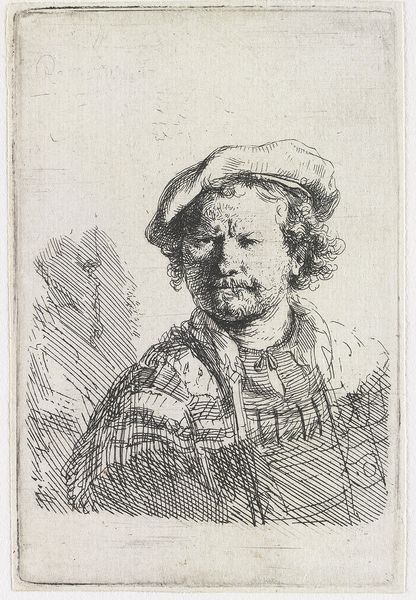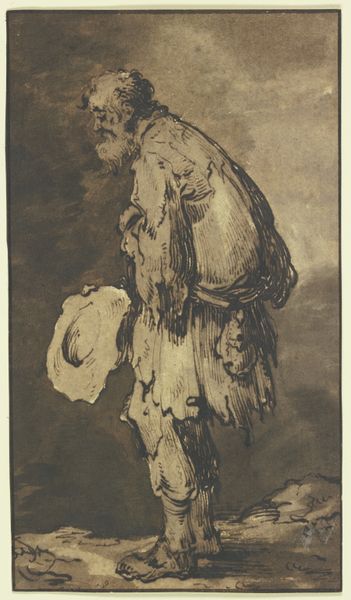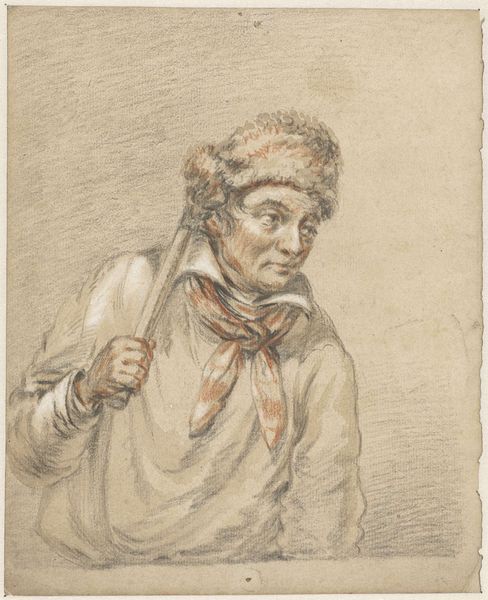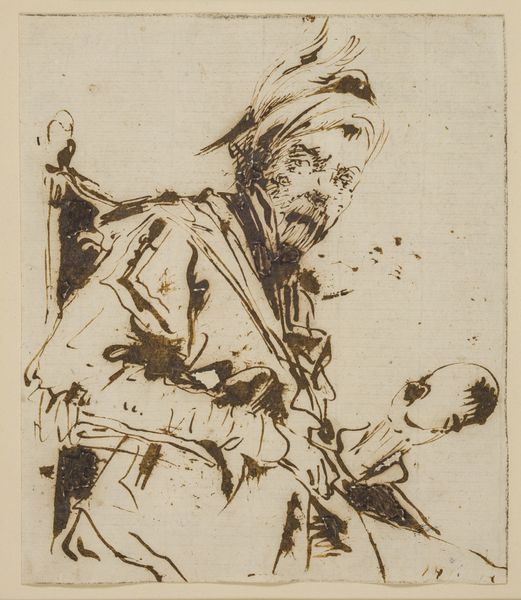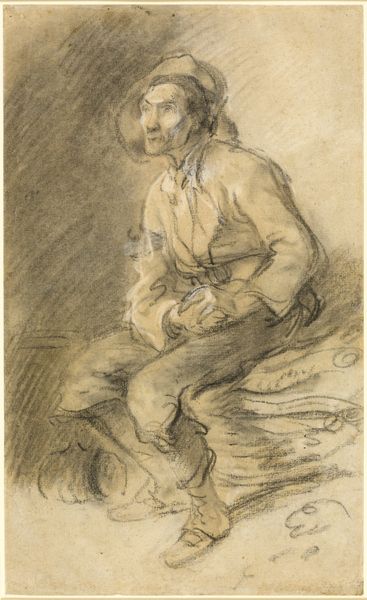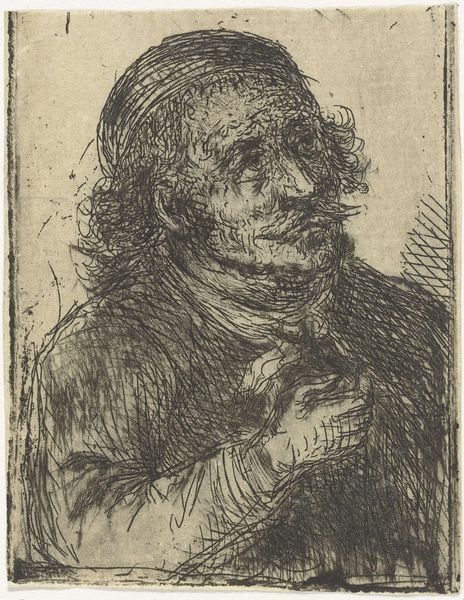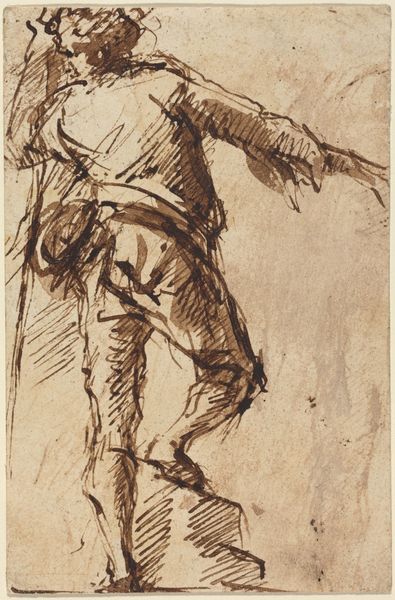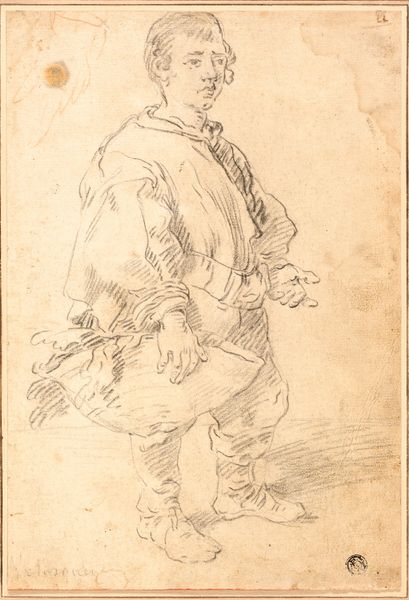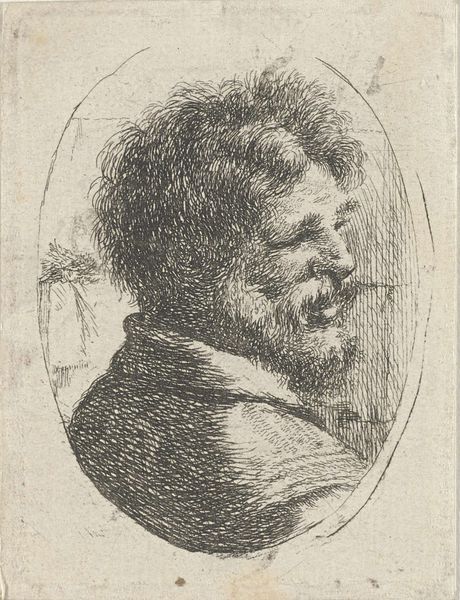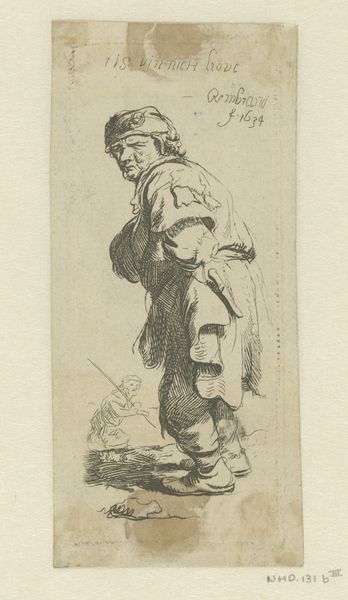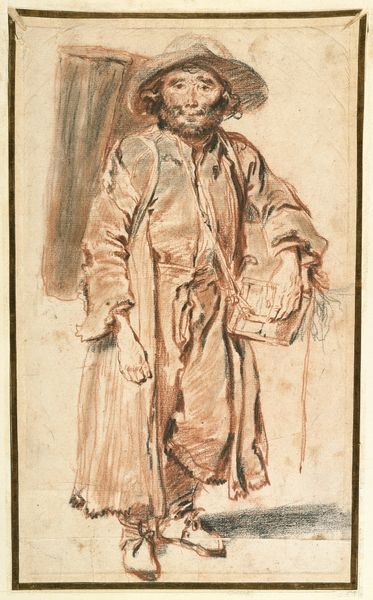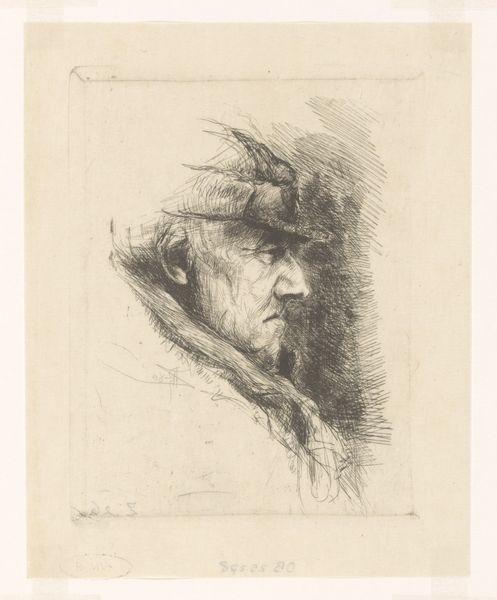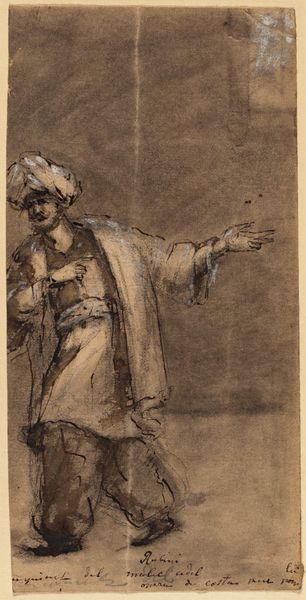
drawing, paper, ink
#
portrait
#
drawing
#
self-portrait
#
baroque
#
dutch-golden-age
#
charcoal drawing
#
paper
#
ink
Dimensions: 5 3/8 x 4 1/2 in. (13.6 x 11.4 cm)
Copyright: Public Domain
Curator: What a compelling self-portrait by Rembrandt van Rijn, likely rendered between 1635 and 1640. It's ink and charcoal on paper, a powerful testament to his skill with such understated materials, now residing at the Metropolitan Museum. Editor: The immediate impression I get is… melancholy. He seems burdened by something, almost withdrawn despite staring directly at us. Curator: That’s quite astute. Self-portraits throughout history often serve as a symbolic mask, don't they? Rembrandt painted many of himself across his life, each a meditation on identity, aging, and the role of the artist. Note how the hat shadows his face, creating a chiaroscuro effect typical of the baroque, hinting at hidden depths. Editor: The shadow definitely accentuates his internal struggle, wouldn't you say? The socio-economic factors are palpable too: the clothing suggests a man grappling with societal expectations while yearning for artistic liberation. Dutch Golden Age prosperity wasn’t universal, and artistic independence came with a price. Curator: Indeed. Consider the use of ink wash. The looseness gives a sense of immediacy, a fleeting moment captured. There's an intriguing dichotomy: this isn't just a likeness but perhaps a deeper introspection. I'm particularly drawn to the repetitive use of circular shapes. They emphasize continuity. Is it also perhaps Rembrandt trying to tell his audiences that time moves in cycles, just like his life. Editor: That perspective enriches it further. Perhaps his circular reasoning even affected his work, his beliefs, and social norms. Looking at it that way opens doors to contemporary discussions about artist visibility. Even now, who is remembered, celebrated, and studied becomes its own statement about power and identity. Curator: Exactly. The endurance of symbols and iconography speaks volumes, prompting us to reconsider what we bring to its interpretations, in dialogue with time and place. Editor: Well, it’s definitely a starting point, then—one image leading us towards infinite historical conversations, a silent rebellion etched in ink.
Comments
No comments
Be the first to comment and join the conversation on the ultimate creative platform.
